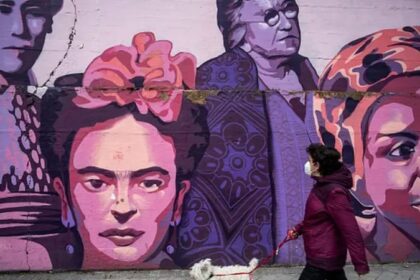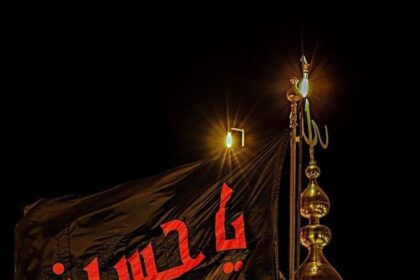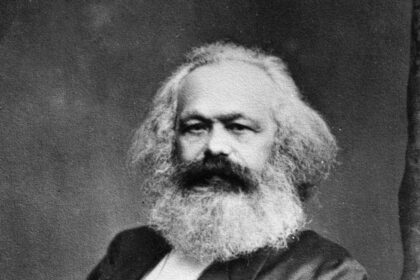Eerily hung on the wall of Mother Teresa’s flagship project, “Home of the Dying,” is a poster.
“I am on my way to Heaven.”
Situated in Kalighat, Kolkata, “Home of the Dying” was built to be a hospice for the sick, destitute, and ill. People of all cultures and religions were taken in and treated by the Missionaries’ staff. Portrayed to the world as a safe haven for destitute people, the reality of Mother Teresa’s ventures is far more sinister.
For a place that was meant to provide solace and sweetness to dying people, a poster that read “I am on my way to heaven” was an unsettling contradiction. Neither inclusive of the majority of the patients’ Hindu beliefs, nor bringing comfort, this poster perfectly depicts Mother Teresa’s brand of empathy—Catholic activism.
With 50–60 men in one room and almost an equal number of women in another, this sight reminded a journalist of Nazi Germany’s Bergen-Belsen concentration camp. All the patients had their heads shaved and were made to sleep in stretchers on the floor in a straight line. The lighting of the room was depressing, and there was no furniture—not even chairs. There were no lawns, no parks, and no recreational activities. Gonzalez reports that he saw nuns routinely reuse needles after washing them in tap water, that clothes—sometimes soiled with urine and feces—and cooking utensils were hand-washed side by side in the same room. Such was the condition of the flagship project of a Nobel Peace Prize winner whose annual turnout is in the millions of dollars.

The healthcare facilities provided in this hospice were and are below par. The patients are not given painkillers, except for aspirin, because Mother Teresa romanticized pain and suffering. Christopher Hitchens calls the hospice “Mother Teresa’s cult of death and suffering,” and rightly so. Mary Loudon reports that during her time working there, she noticed that Mother Teresa’s missionaries did not take people to hospitals, no matter how grave the illness. Medication was not given because “such was not the way of Jesus.” Mother Teresa’s sadistic tendencies became the cause of many deaths. The poor and helpless people of Kolkata provided a perfect opportunity for Teresa to earn the respect of the Vatican. Their suffering became raw material for earning the world’s compassion.
Many believe that Teresa’s ulterior motive was to convert these destitute people to Christianity to elevate her ranks in front of the Vatican. She encouraged members of her order to baptize the dying people, regardless of their religion and identity. Muslims, Hindus, and Sikhs were baptized.
Would a true empath of the needy and destitute reduce them to non-persons like this and impose their own religious beliefs? The poster’s promise of Heaven above someone’s deathbed symbolized the cold ethos of this approach.
Teresa’s global crusade was against abortion, divorce, and contraception—the most effective tools of oppression against women. In her Nobel acceptance speech, Teresa remarked that if a mother can kill her own child, in her own room, the only thing that is left for the rest of the world is to kill each other. This statement draws a very false and outrageous equivalency. It suffocates the reproductive rights of women and furthers the purity-obsessed patriarchal norms—something the Vatican would have loved.
Despite her work with orphaned children, Teresa’s stance against contraceptives and family planning seemed paradoxical. It is a surprise that a humanitarian who owned orphanages across the world and rescued infants from dumps of trash to give them a life did not advocate for birth control.
Mother Teresa was also an agent of capitalism in the third world. One can argue that Project Teresa was a grant of the West’s conscience to forward a “saviour” for the exploited third-world countries. They had, once again, created a Messiah that was one of them—Teresa of Albania.
Most of Teresa’s donations came from corrupt billionaires—like Charles Keatings, who was jailed for America’s greatest financial scandal—and multinational corporations. She was complicit with autocratic regimes and often became a mouthpiece for them. Whenever there was a humanitarian crisis, Teresa was sent there to cover the situation and issue a statement of peace. For example, under the Reagan administration, Teresa was sent to Guatemala, where Reagan was financing a civil war, to issue a peace statement. Despite the mass slaughter, she reported, “Everything was peaceful.” She was also an ally of Haiti’s highly autocratic and repressive Duvalier regime and accepted donations from them.

One of the most outrageous examples of Teresa’s capitalist indoctrination can be found in the 1984 Bhopal spillover, when a multinational company’s negligence killed over two thousand people and affected many more. In response to this atrocious mass murder, Teresa said, “Forgive, forgive.” Her message to the families of over two thousand dead Indians was to forgive the multinational corporation.

“How can the sinful and selfish rulers of the world be so congenial towards Teresa? Is it because she returns the favor?” Hitchens asks in his documentary. Truly so, how can a religious humanitarian find such a place amongst the rich, unless they are an ally of the status quo?
Another shocking incident that reveals the true face of this Nobel Laureate is the one that involves Reverend Donald McGuire. McGuire was the spiritual director of Mother Teresa’s order, “Missionaries of Charity,” and served as a confessor to her. He was alleged of child molestation. Twenty-eight men surfaced and blamed him for misconduct. Mother Teresa issued a statement in favor of him and appealed to the church authorities on his behalf, expressing confidence in his character. She referred to him as a “man of God” and convinced the church to reinstate him to the ministry. He molested hundreds of boys in the next decade. It was only after Teresa’s death that he was convicted and sent to prison.

Teresa’s missionary cult is now a multinational charity organization, with an annual turnover in tens of millions. Yet, there is no transparency in spending. Unlike multinational charities like the Red Cross, the Missionaries of Charity offer no record. CNN reports,
“It’s true there’s no transparency – and very little information available – on the group’s bookkeeping. CNN’s request to interview the current head of the organization was declined.”
The condition of the hospices and orphanages in Kolkata tells us that the charity is not going where it is supposed to. Where does it go, then? One can only speculate.
Teresa of Albania was canonized by the Vatican in 2016, which means she was now Saint Teresa. The Catholic Church regards her as a symbol of piety and virtue, and deems her a venerated Saint. Teresa achieved what she wanted—the respect of the Vatican. But who paid the cost of it?

















